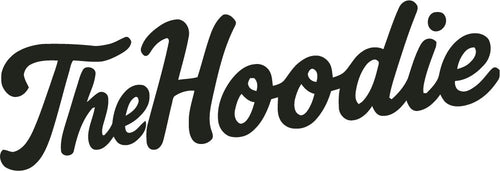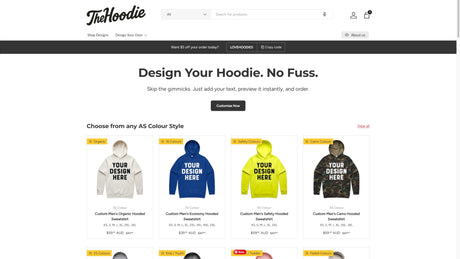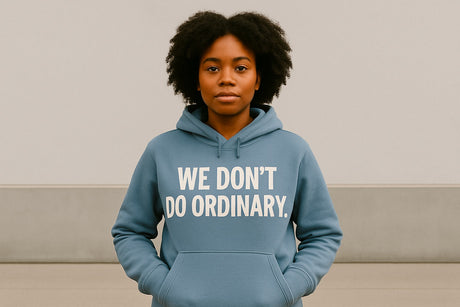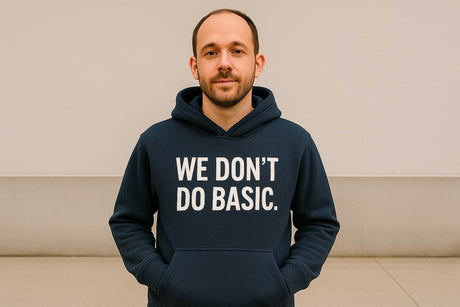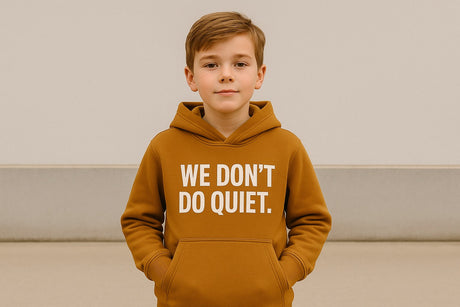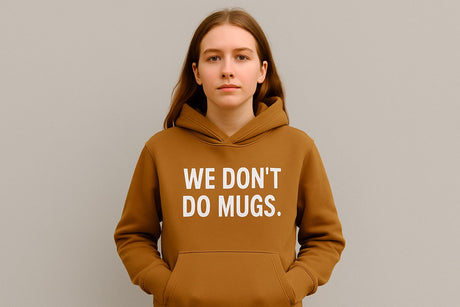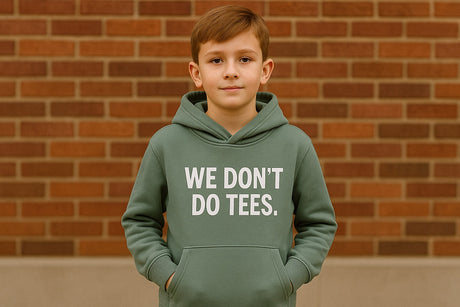When planning a bulk hoodie order, understanding the sizing preferences of your target audience is pivotal. In Australia, sizing trends may differ slightly from global patterns, so it's crucial to tailor your stock to these local preferences. By aligning your stock with consumer demand, you can enhance customer satisfaction, minimise excess stock, and optimise sales.
The most prominent sizes you’ll encounter are likely medium (M) and large (L). These tend to be the most popular sizes purchased, with medium often being the top choice among women and large frequently favoured by men. However, extra-large (XL) sizes are also gaining popularity as oversized hoodies are increasingly fashionable. Consequently, a smart stock selection might initially prioritise medium and large sizes, followed by a generous number of XL options.
Small (S) and extra-small (XS) sizes should not be overlooked, especially if your audience includes teenagers or young adults, as these groups often prefer a more fitted look. Additionally, it’s wise to consider the presence of extra-extra-large (XXL) sizes in your order, particularly if your products are aimed at a diverse demographic.
To establish the optimal size distribution, analysing past sales data is invaluable. Check which sizes sold out quickly in previous orders and adjust your future orders accordingly. If you lack historical data, a general rule might be to order 30% M, 30% L, 20% XL, with the remaining 20% spread among other sizes. This can serve as a baseline until you accumulate enough data to make more precise adjustments.
Soliciting customer feedback is another effective method to gauge size preferences. Implementing a survey at the point of sale or hosting size-specific events can yield insightful data. Engaging with your community on social media to gather direct input is also beneficial.
Moreover, understanding your brand’s niche and customer base can further guide your decisions. For instance, a brand targeting athletes may experience higher demand for larger sizes compared to a brand focused on streetwear, where a tighter fit is often preferred.
Considering regional variations within Australia is wise, too. For example, customers in urban areas might have different style preferences compared to those in rural locations. Collaborating with local distributors can provide targeted insights, enhancing your ability to forecast demand accurately.
Finally, think about seasonality. Demand for hoodies is generally higher during colder months, so aligning your stock levels with seasonal trends ensures a higher turnover rate. While these guidelines provide a solid framework, continually reevaluating your strategy based on emerging data and trends will sustain your brand’s agility and responsiveness. By keeping your finger on the pulse of your customers’ sizing demands, you’ll be well equipped to make informed stocking decisions and elevate your brand’s reputation.
